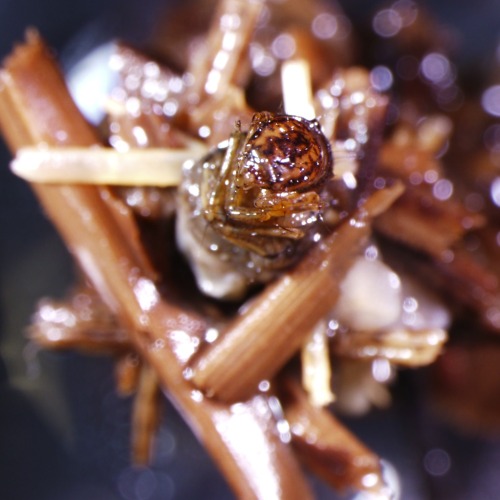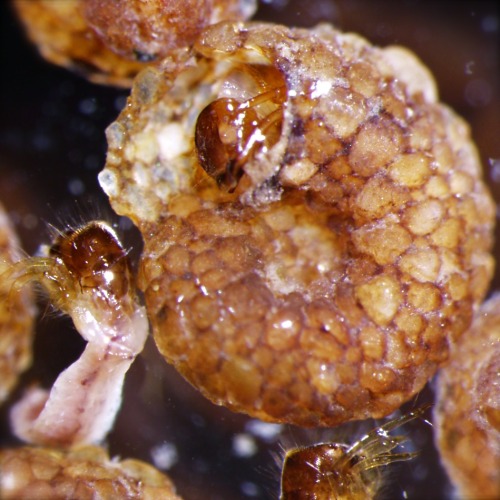#caddisflies
The top picture is a case made by a caddisfly in the genus Platycentropus. The larvae stack small, short pieces of detritus at varying angles to build a short, bulky home. The bottom picture is the Platycentropus in its case.
Order: Trichoptera
Family: Limnephilidae
Genus: Platycentropus
Oswego County, NY
Post link
One last shot of this cool little guy. (Trichoptera, Helicopsychidae, Helicopsyche). Pratt’s Falls, NY
Helicopsychidae are clingers, with the larvae living in the portable cases pictured above. Because of how similar their cases look to snail shells, this family was actually originally described as a snail. The helical shape of the case improves resistance to crushing (Voshell, JR. 2002).
Post link
A group of Helicopsyche, collected from Pratt’s Falls, NY. (Trichoptera, Helicopsychidae, Helicopsyche)
Helicopsychidae are clingers, with the larvae living in the portable cases pictured above. Because of how similar their cases look to snail shells, this family was actually originally described as a snail. The helical shape of the case improves resistance to crushing (Voshell, JR. 2002).
Post link
One of my favorite caddisflies. These little guys make spiral-shaped mobile homes. From Pratt’s Fall, near Syracuse, NY. (Trichoptera, Helicopsychidae, Helicopsyche)
Helicopsychidae are clingers, with the larvae living in the portable cases pictured above. Because of how similar their cases look to snail shells, this family was actually originally described as a snail. The helical shape of the case improves resistance to crushing (Voshell, JR. 2002).
Post link
These Rhyacophila look frozen in time. Really they’re not frozen at all. They’re just really sleepy from a nice cool ethanol bath. So so sleepy. (Order: Trichoptera, Family: Rhyacophilidae)
This particular family of Trichoptera are free-living, unlike the vast majority of caddisflies which build homes/cases to live in.
Free-living caddisflies from the family Rhyacophilidae are typically found in fast-moving mountain streams. These were collected in a short, but fast stream connecting two lakes in the Adirondack preserve. They crawl around underneath rocks, using silk to anchor them to the substrate.
Post link






